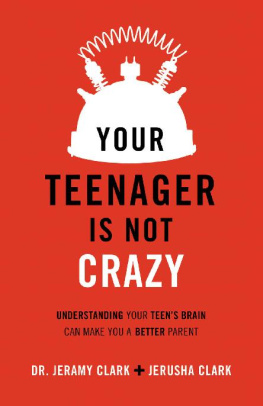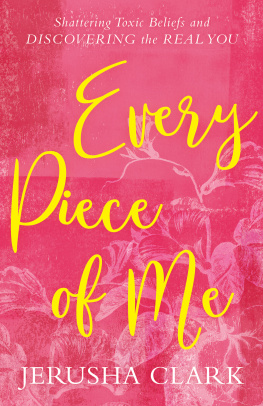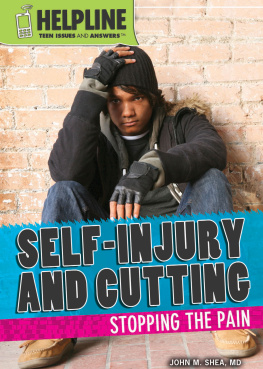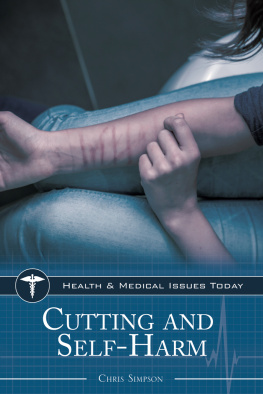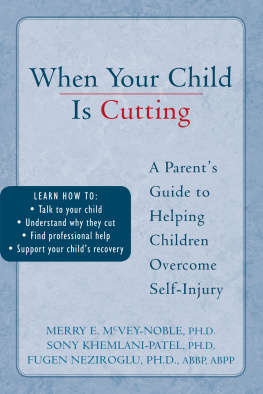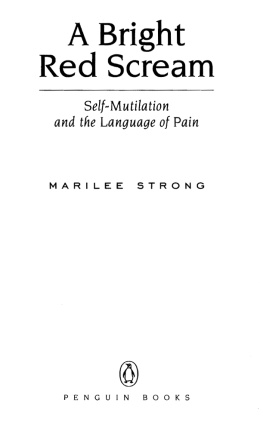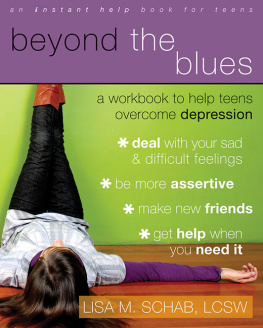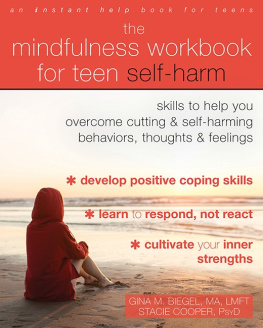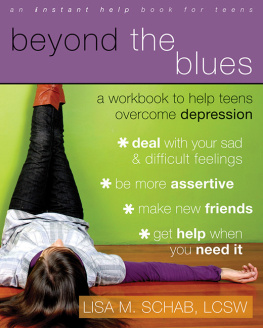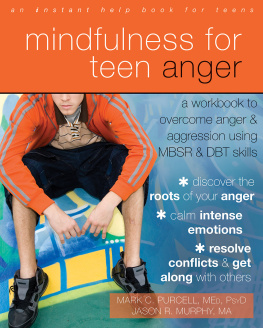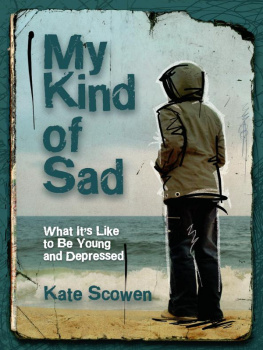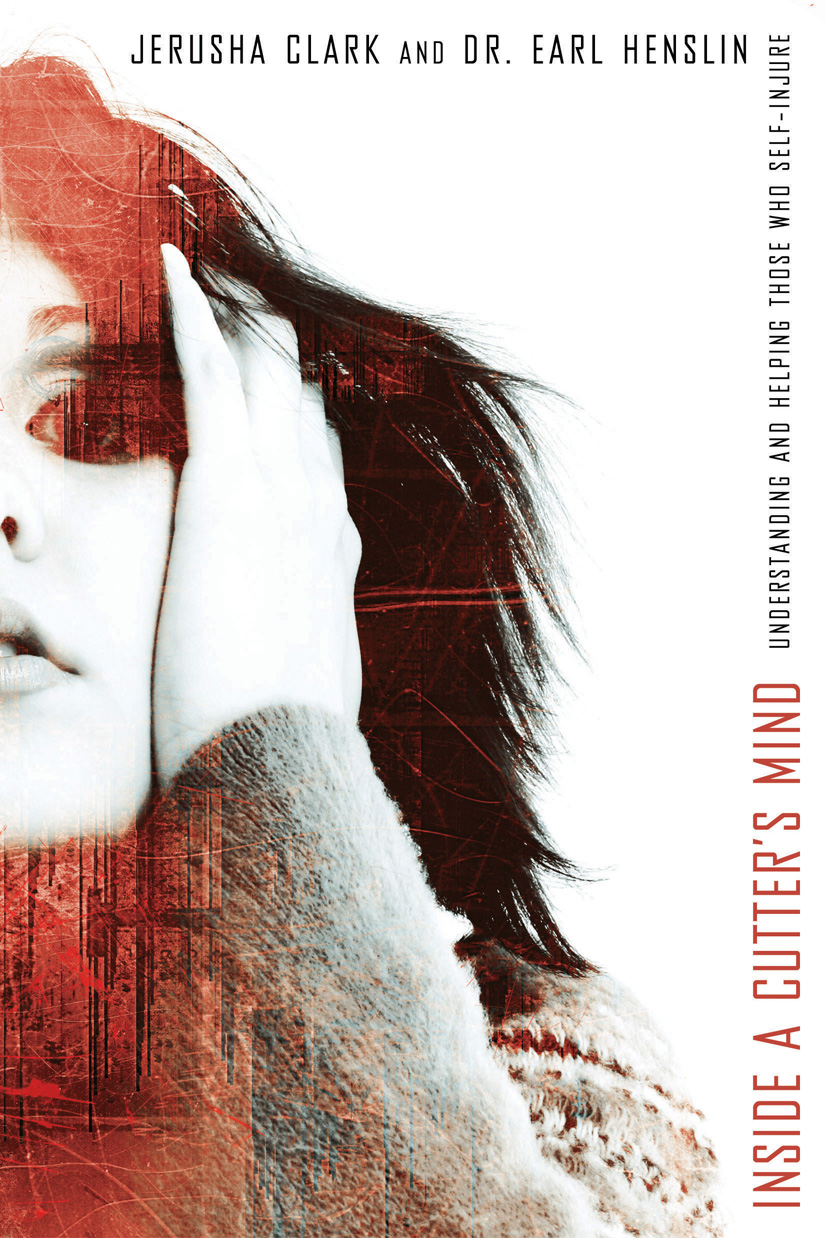The fallout of an abandoned generation often grieves and overwhelms parents and youth workers. Common sense is not enough to help us understand. We all need the kind of help that Inside a Cutters Mind provides. I heartily recommend it to all who want to keep in touch with what many of todays youth are experiencing.
PAUL FLEISCHMANN, president,
National Network of Youth Ministries
This book is a bright light focused on the shadowy, dark phenomenon of self-injury. Using a solid foundation of biblical principles coupled with observations by professional therapists and personal experiences of those who have been there, Jerusha Clark and Dr. Earl Henslin bring a sense of hope to those who struggle with self-harm and a wealth of practical insights to those who seek to offer hope and healing.
PHIL SWIHART, PhD, clinical psychologist;
director of counseling services, Focus on the Family
If you are looking for help or trying to understand a cutter, you have found your resource. This book lives up to its title and makes sense of what goes on Inside a Cutters Mind. Not only will you better understand the behavior but you will also find comfort, encouragement, direction, and most of all hope in this horrific trauma. Even in the midst of the pain, Jerusha and Dr. Henslin help us see the caring touch of the Creator.
DAVE CARDER, coauthor of Secrets of Your Family Tree
and Torn Asunder: Recovering from Extramarital Affairs
Literature on self-injury is incredibly relevant. Inside a Cutters Mind provides both those who suffer from the illness and those loved ones close to them the opportunity to feel less alone and more informed on a growing epidemic.
PLUMB, Curb recording artist
JERUSHA CLARK WITH DR. EARL HENSLIN
INSIDE A CUTTERS MIND
UNDERSTANDING AND HELPING THOSE WHO SELF-INJURE


O UR G UARANTEE TO Y OU
We believe so strongly in the message of our books that we are making this quality guarantee to you. If for any reason you are disappointed with the content of this book, return the title page to us with your name and address and we will refund to you the list price of the book. To help us serve you better, please briefly describe why you were disappointed. Mail your refund request to: NavPress, P.O. Box 35002, Colorado Springs, CO 80935.
For a free catalog
of NavPress books & Bible studies call
1-800-366-7788 (USA) or 1-800-839-4769 (Canada)
www.NavPress.com
TH1NK
P.O. Box 35001
Colorado Springs, Colorado 80935
2007 by Jerusha Clark and Dr. Earl Henslin
All rights reserved. No part of this publication may be reproduced in any form without written permission from NavPress, P.O. Box 35001, Colorado Springs, CO 80935.
www.navpress.com
TH1NK and the TH1NK logo are registered trademarks of NavPress. Absence of in connection with marks of NavPress or other parties does not indicate an absence of registration of those marks.
ISBN-10: 1-60006-054-4
ISBN-13: 978-1-60006-054-0
Cover design by Charles Brock | The Designworks Group; www.thedesignworksgroup.com
Cover photo by Shutterstock
Creative Team: Nicci Hubert, Kathy Mosier, Arvid Wallen, Kathy Guist
Unless otherwise identified, all Scripture quotations in this publication are taken from the Holy Bible, New Living Translation ( NLT ), copyright 1996. Used by permission of Tyndale House Publishers, Inc., Wheaton, Illinois 60189. All rights reserved. Other versions used include: the HOLY BIBLE: NEW INTERNATIONAL VERSION ( NIV ). Copyright 1973, 1978, 1984 by International Bible Society. Used by permission of Zondervan Publishing House. All rights reserved; THE MESSAGE ( MSG ). Copyright 1993, 1994, 1995, 1996, 2000, 2001, 2002. Used by permission of NavPress Publishing Group; the New Revised Standard Version ( NRSV ), copyright 1989, by the Division of Christian Education of the National Council of the Churches of Christ in the USA, used by permission, all rights reserved; and The Holy Bible, New Century Version ( NCV ), copyright 1987, 1988, 1991 by Word Publishing, Dallas, Texas 75039. Used by permission.
Clark, Jerusha.
Inside a cutters mind : understanding and helping those who
self-injure / Jerusha Clark with Dr. Earl Henslin.
p. cm.
Includes bibliographical references.
ISBN 1-60006-054-4
1. Self-mutilation. 2. Self-injurious behavior. 3. Psychotherapy.
I. Henslin, Earl R. II. Title.
RC569.5.S45I5744 2007
616.8582--dc22
2006031775
Printed in the United States of America
2 3 4 5 6 7 8 9 10 / 11 10 09 08
To Jeramy Alan,
my beloved husband
and best friend.
Itll always be
you and me, against
the world.
CONTENTS
Environmental and Physical Conditions That Often
Accompany Self-Injury
FOREWORD
To the average person it just doesnt make sense. Why would anyone deliberately hurt himself or herself? Isnt that crazy? Doesnt that go against human nature? Doesnt that go against the belief that we are self-protective organisms?
In this insightful and beautifully written book, Inside a Cutters Mind, Jerusha Clark and Dr. Earl Henslin have done an excellent job explaining the self-harm phenomena in accessible language with vividly clear examples. More importantly, they have given sufferers and families a road map to healing. By adding the spiritual dimension to understanding and treating self-injurers, the authors, for the first time that I am aware of in books addressing this issue, provide practitioners and patients with a more comprehensive toolbox to overcome this potentially devastating problem.
I have treated many self-harmers over the years. This book rings true with my own clinical experience in many ways. Heres an example of how complex this problem can be: A twenty-three-year-old woman came to me for help with bulimia and depression. Through a combination of medication and psychotherapy, she showed significant improvement. After two years she ended treatment in a much healthier state than when she started. Eight years later, after a very stressful period at work, she started cutting on herself, at first lightly and then much more intensely. Initially she appeared to be having blackouts when the cutting occurred. She would have times she didnt remember. Through treatment we discovered that she had been sexually molested by a neighbor when she was five years old. As this book points out, prior abuse is common in cutters. I worked with her using various forms of treatment including EMDR, also discussed in this book, to deal with her past traumas. These techniques were very helpful for her. Additionally, I prescribed Naltrexone for her on the premise that cutting raises levels of endorphins, morphinelike substances that bring pleasure to the brain and thereby contribute to the addictive, repetitive behavior of cutting. Naltrexone blocks the effects of endorphins, so rather than causing relief from emotional pain, the cutting causes acute pain, as it would for any of us. Over time, this patient was able to stop her self-destructive behavior.
This case highlights many of the important factors with self-injurious behavior. It is often associated with other challenges, such as eating and mood disorders. Environmental factors, such as past abuse, often play an important role. Treatment usually involves biological and psychological therapies, both of which are discussed at length over the course of this book.


